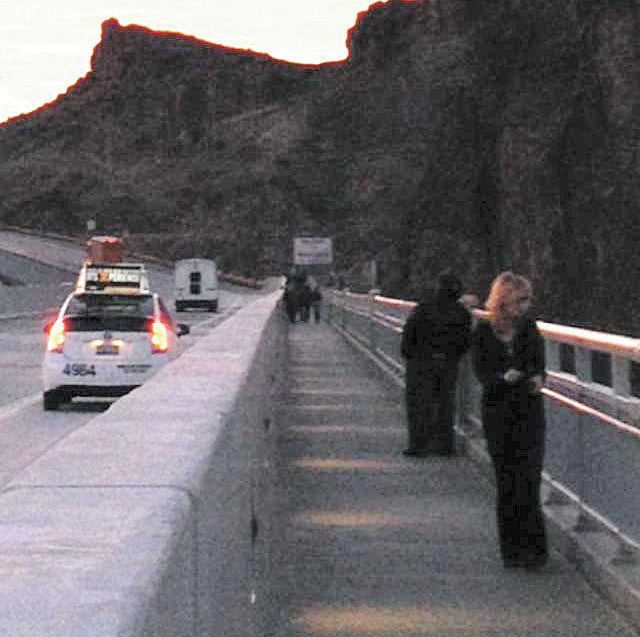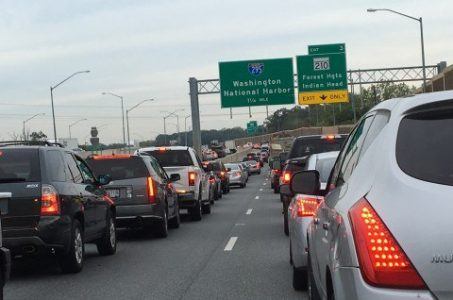Suicide on Hoover Dam Bridge Shines Light on Las Vegas’ Dirty Secret
Posted on: January 18, 2014, 05:30h.
Last updated on: November 30, 2021, 10:50h.

Beyond the endless glare of the bright neon lights and the sounds of slot machines, cocktail glasses and sexy encounters, lies a much, much darker and grimmer reality in Sin City: a seldom-reported fact – and one that many hotels go out of their way to keep out of the media – is the actual number of suicides committed in Las Vegas, sometimes following a final weekend of debauchery and with as many tragic motivations as life itself has to offer. These suicides are not always related to anything that happened in Las Vegas, mind you; but the City of Neon seems to represent to many people a place to see life off, for whatever reasons.
In fact, several studies have found that Las Vegas is the #1 destination of choice for people to kill themselves in the U.S.
Hotels Do What They Can
Obviously, there’s no real way for hotels to stem this steady stream of lives lost, as generally the deed is done from inside a hotel room, with as many methods used as the reasons themselves for the suicides. The one thing hotels can and almost always do is make it extremely difficult to fling oneself from a hotel room window, however; either making them difficult or impossible to open; or making those openings so narrow that all but the slightest among us could never fit through the limited space.
But that doesn’t mean tourists on a mission to self-destruct can’t throw themselves over somewhere else, and the story of one such woman from Phoenix now has her family and others calling out for higher barriers and stricter security at the most obvious of these non-Strip locations: the world-famous Hoover Dam, about 35 miles off the Las Vegas Strip, which offers an unsurvivable drop into rushing water below for anyone who is intent on ending their own life.
“We are in support of providing stronger safety measures at the O’Callaghan-Tillman Memorial Bridge [at Hoover Dam] in the hope that they will deter future tragic occurrences,” said the family of Heather Price Papayoti, the victim in this latest case. It’s certainly not the first self-inflicted death at the Hoover Dam; in fact, Papayoti is the seventh person to jump to her death into the Colorado River 900 feet below from the bridge since it opened in October 2010.
Woman Plunges to Her Death
It was just last week, on January 10, that Papayoti took a cab ride more than 280 miles straight from a Tempe, Arizona behavioral counseling meeting, telling the driver to take her to the Hoover Dam, where she was somehow able to quickly crawl over a 5-foot barrier railing and jump, just moments before sunset.
Her family’s issued media statement reflects the despair that they were clearly aware Papayoti – who was married with a daughter – had been fighting recently.
“We are mourning the loss of our beautiful Heather, wife, daughter, sister (in law), aunt and friend. We were blessed with her laughter and light for all the years we shared with her. Sadly the darkness of depression and anxiety consumed her in recent months, and despite treatment, she was unable to conquer it.”
It will now be up to the Nevada Department of Transportation to further explore possible improved barriers and security measures, as well as come up with a plan and the money to fund it, which would come most likely from federal highway programs.
These concepts are not actually new; in fact, ways to discourage suicides were under discussion even before it was opened, according to district engineer for the Nevada Department of Transportation Mary Martini.
Among the possible solutions initially considered were safety nets and 6 – 8 foot Plexiglass shields, said Martini; but both were dismissed as either being too tempting for “jackass” type daredevils, or too obscuring of the magnificent view of the river for which the pedestrian walkway was being built. Developers were concerned the plexiglass would grow dull and also be a magnet for graffiti artists. On top of all that, the costs would be in the many millions, said Martini, who also noted that the Federal Highway Administration would have to approve anything along these lines.
Martini says the current five-foot rail was only designed to prevent people from falling, not to prevent determined jumpers from offing themselves. And in order to jump, people like Papayoti must crawl over a 5-foot 6-inch concrete wall to even access that railguard, Martini added.
“Can you crawl over it? Yes. But if we made the guard rails on the bridge any higher, it would have prevented people from being able to see the dam.
“I don’t think we could engineer enough ways to prevent somebody from committing suicide off the bridge,” she said. “If somebody is determined to do it, then they are going to do it.”
Additional requests for improved security patrols and a suicide prevention line – much like the ones at other major U.S. bridges – are also being called for by Papayoti’s family. But no matter what happens down the line, for one despondent woman, she is now just another sad statistic in a city that deals with suicide as simply another side-effect of being larger than life itself.
Related News Articles
MGM National Harbor Grand Opening Excitement Slows on Traffic Concerns
US Sanctions Kings Roman Casino in Laos For Operating Global Crime Network
Steve Wynn Cannot Sell Shares in Wynn Resorts, Says Nevada Judge
Most Popular
FTC: Casino Resort Fees Must Be Included in Upfront Hotel Rates
Genovese Capo Sentenced for Illegal Gambling on Long Island
NBA Referees Expose Sports Betting Abuse Following Steve Kerr Meltdown
UPDATE: Former Resorts World & MGM Grand Prez Loses Gaming License
Most Commented
-
UPDATE: Whiskey Pete’s Casino Near Las Vegas Closes
— December 20, 2024 — 31 Comments -
Caesars Virginia in Danville Now Accepting Hotel Room Reservations
— November 27, 2024 — 9 Comments -
UPDATE: Former Resorts World & MGM Grand Prez Loses Gaming License
— December 19, 2024 — 8 Comments -
FTC: Casino Resort Fees Must Be Included in Upfront Hotel Rates
— December 17, 2024 — 7 Comments















